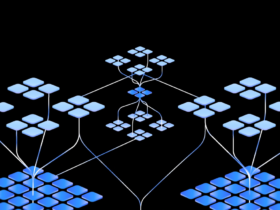A group of researchers at the University of Limerick have unveiled an innovative approach to designing molecules for computational purposes. This method, which draws inspiration from the human brain’s functioning, has the potential to dramatically enhance the speed and energy efficiency of artificial intelligence systems.
The research team, led by Professor Damien Thompson at the Bernal Institute, has discovered novel techniques for manipulating materials at the most fundamental molecular level. Their findings, recently published in Nature, represent a significant leap forward in the field of neuromorphic computing – a branch of computer science that aims to mimic the structure and function of biological neural networks.
The Science Behind the Breakthrough
At the heart of this discovery lies an ingenious approach to harnessing the natural movements of atoms within molecules. Professor Thompson explains, “We’re essentially using the inherent wiggling and jiggling of atoms to process and store information.” This method allows for the creation of multiple memory states within a single molecular structure, each corresponding to a unique electrical state.
The team’s approach diverges significantly from traditional silicon-based computing. In conventional computers, information is processed and stored using binary states – on or off, 1 or 0. However, the Limerick team’s molecular design allows for a multitude of states within a space smaller than an atom, dramatically increasing information density and processing capability.
This molecular-scale manipulation addresses one of the most persistent challenges in neuromorphic computing: achieving high resolution. Until now, brain-inspired computing platforms have been limited to low-accuracy operations, restricting their use in complex tasks such as signal processing, neural network training, and natural language processing. The Limerick team’s breakthrough overcomes this hurdle, opening up new possibilities for advanced AI applications.
By reconceptualizing the underlying computing architecture, the researchers have created a system capable of performing resource-intensive workloads with unprecedented energy efficiency. Their neuromorphic accelerator, spearheaded by Professor Sreetosh Goswami at the Indian Institute of Science, achieves an impressive 4.1 tera-operations per second per watt (TOPS/W), marking a significant advancement in computational power and energy conservation.
The implications of this discovery extend far beyond academic research. As Professor Thompson notes, “This outside-the-box solution could have huge benefits for all computing applications, from energy-hungry data centers to memory-intensive digital maps and online gaming.” The potential for more efficient, powerful, and versatile computing systems could revolutionize industries ranging from healthcare and environmental monitoring to financial services and entertainment.
Potential Applications and Future Impact
While the immediate implications for data centers and edge computing are clear, this molecular computing breakthrough could catalyze innovations across numerous sectors. In healthcare, for instance, these high-precision neuromorphic systems could enable real-time analysis of complex biological data, potentially revolutionizing personalized medicine and drug discovery processes.
The technology’s energy efficiency makes it particularly promising for space exploration and satellite communications, where power constraints are a significant challenge. Future Mars rovers or deep-space probes could benefit from more powerful onboard computing without increasing energy demands.
In the realm of climate science, these molecular computers could enhance our ability to model complex environmental systems, leading to more accurate climate predictions and better-informed policy decisions. Similarly, in finance, the technology could transform risk assessment and high-frequency trading algorithms, potentially creating more stable and efficient markets.
The concept of “everyware” – integrating computing capabilities into everyday objects – opens up fascinating possibilities. Imagine clothing that can monitor your health and adjust its insulation in real-time, or food packaging that can detect spoilage and automatically adjust its preservation mechanisms. Buildings could become more than static structures, dynamically optimizing energy usage and responding to environmental changes.
As research progresses, we may see the emergence of hybrid systems that combine traditional silicon-based computing with molecular neuromorphic components, leveraging the strengths of both approaches. This could lead to a new paradigm in computing architecture, blurring the lines between hardware and software, and potentially revolutionizing how we design and build computational systems.
The Bottom Line
The University of Limerick’s molecular computing breakthrough is a paradigm shift that could redefine our relationship with computation. By marrying the efficiency of biological processes with the precision of digital systems, this innovation opens doors to possibilities we’ve only begun to imagine. As we stand on the brink of this new era, the potential for transformative change across industries and societies is immense, promising a future where computation is not just a tool, but an integral, invisible part of our daily lives.














